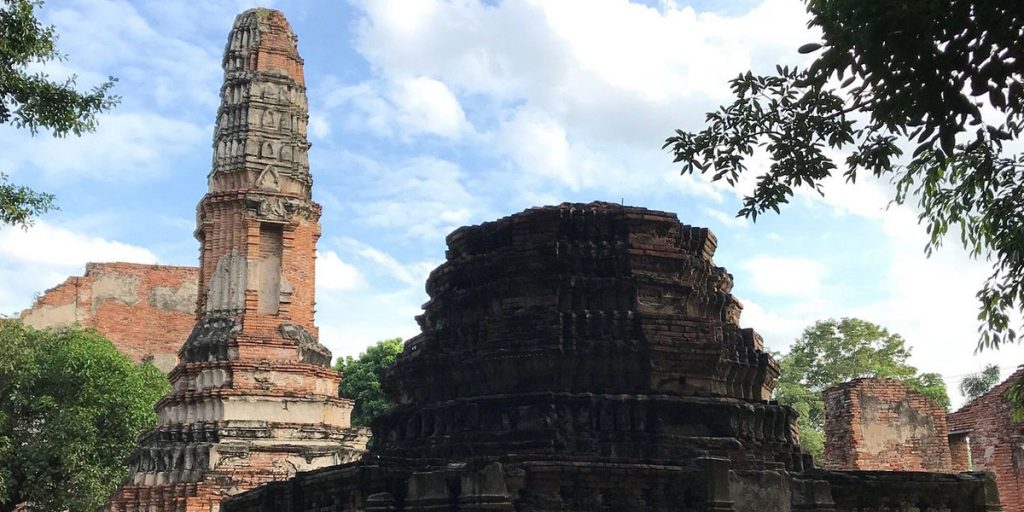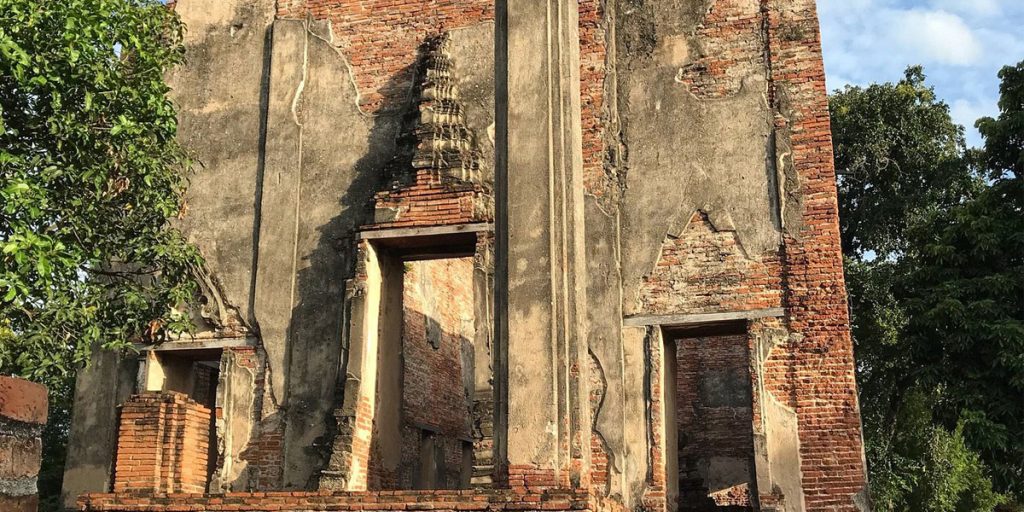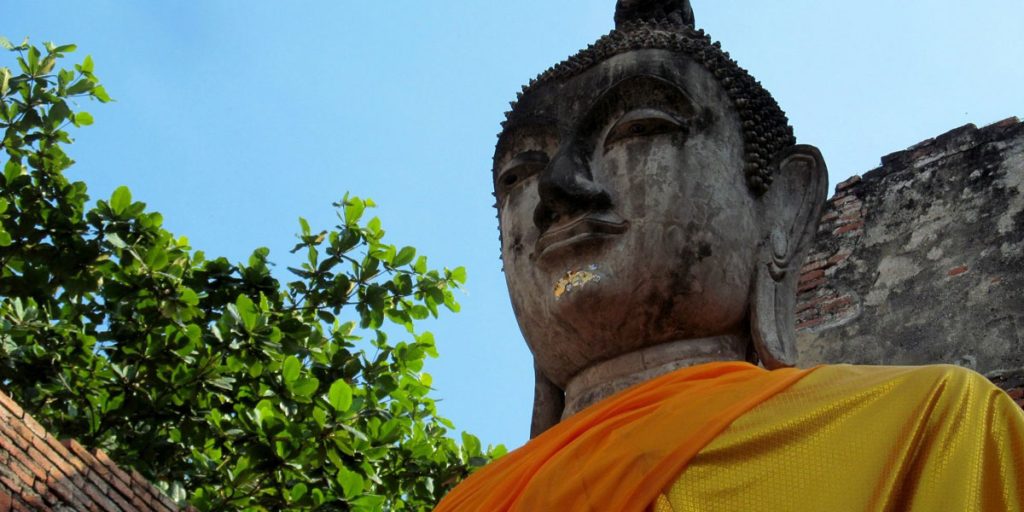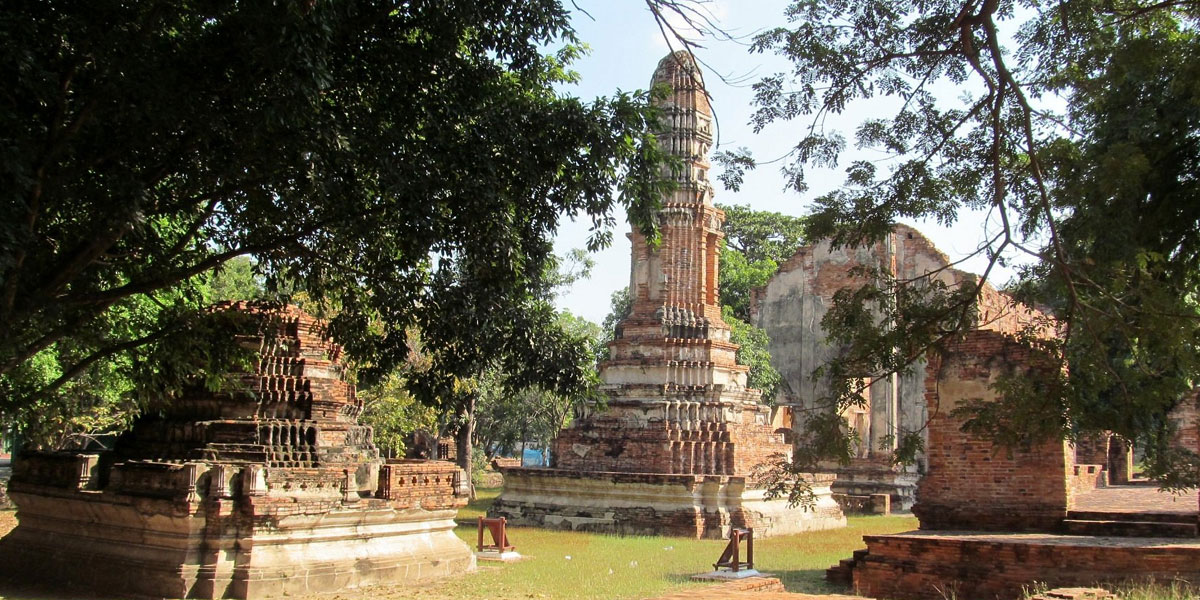Ayutthaya is a city where history feels close and welcoming, and one of the calmest corners of this former Siamese capital is Wat Borom Phuttharam. Visitors come here for quiet walking, easy photography, and a sense of how a royal era shaped temple life. The temple sits within the wider historical zone and rewards patient exploration. You will not find crowds at every turn, which makes it perfect for travelers who value space and time. This guide explains how to plan your visit with clarity, from the best time to go and what to wear to gentle etiquette, nearby sights, and suggested itineraries.
Quick Orientation
- Location In The City: The temple is within the Ayutthaya historical zone on the main island, so Wat Borom Phuttharam is easy to combine with other nearby ruins during a single route.
- General Atmosphere: It is usually quieter than the most famous sites, so you will enjoy a slower pace while still seeing classic Ayutthaya features.
- Ideal Visit Length: Plan 45 to 75 minutes for a calm look, or longer if you enjoy sketching, reading about history, or photography.
- Who Will Enjoy It: Independent travelers, culture lovers, families seeking a gentle stop, and photographers who like soft light and open lines.
- Accessibility Expectation: Grounds are mostly open with a few uneven paths and low steps, so basic mobility is helpful for comfort.
Historical Background

- Late Ayutthaya Heritage: The site reflects styles from the later centuries of the Ayutthaya Kingdom, and Wat Borom Phuttharam shows how royal patronage shaped temple design and ritual spaces.
- Royal Connections: Kings and high nobles supported temple construction and restoration, which influenced the layout, scale, and use of sacred halls.
- Layers Of Use: Parts of the complex evolved over time, with halls that shifted roles as communities changed and the city faced conflict and recovery.
- Post-Ayutthaya Story: After the fall of the kingdom, temples across the island experienced periods of abandonment, rebuilding, and renewed care.
- Present Identity: Today the site offers teaching moments about resilience and the way Thai communities preserve spiritual landmarks.
Architectural Highlights
- Signature Layout: Courtyards, viharn bases, and stupas create a clear axis, and Wat Borom Phuttharam presents a balanced plan that guides your movement naturally.
- Stupa And Prang Forms: You may notice bell-shaped stupas and prang silhouettes that point to the sky, symbols of the path toward enlightenment.
- Brick And Stucco: Weathered brick cores and stucco details reveal craftsmanship, with traces that hint at lotus motifs and flame-like patterns.
- Proportions And Light: Open areas allow sunlight to draw crisp shadows, which makes the forms readable from different viewing angles.
- Materials And Repairs: Sections show careful conservation work that stabilizes original brick while keeping the patina that makes the place feel authentic.
Spiritual Atmosphere And Meaning

- Living Heritage: Even if parts are ruins, Wat Borom Phuttharam represents an active link between past devotion and present cultural memory.
- Symbols To Notice: Stupas symbolize the Buddha and the path, while platform levels suggest stages of spiritual practice and mental clarity.
- Quiet Reflection: The site’s slower rhythm invites you to sit, breathe, and spend a few minutes in mindful silence before you begin taking photos.
- Respectful Presence: Keep voices low and treat stones like library books, since they carry centuries of stories.
- Simple Offerings: If you see a small active shrine nearby, a light bow and a soft thank you can be your respectful gesture.
Best Time To Visit
- Morning Light: Early sunshine lights brickwork gently, and Wat Borom Phuttharam looks beautiful when the air is cooler and the shadows are long.
- Late Afternoon Calm: Colors warm up again near sunset, so late day can be ideal for mood and comfort.
- Weather Patterns: Dry months are most comfortable, while rainy months bring greener grass and dramatic skies.
- Weekday Advantage: Midweek often means fewer tour groups and a smoother loop through the grounds.
- Festival Sensitivity: On local holidays, plan extra time for traffic and consider earlier starts.
How To Reach

- From Bangkok: Trains, vans, and private cars reach Ayutthaya in about two hours, and Wat Borom Phuttharam fits easily into standard day trips.
- From Ayutthaya Station: Cross to the island by ferry or bridge, then hire a tuk tuk or rent a bicycle from one of the many shops.
- Moving Around The Island: Bicycles are pleasant for short hops, while tuk tuks work best for longer multi-temple circuits.
- Maps In Practice: Keep a simple offline map on your phone to track your loop without relying on constant data.
- Parking Notes: Drivers generally find street parking near historical zones, but always avoid blocking local access.
Tickets And Entrance
- Combined Tickets: Many main sites use a joint ticket system, and Wat Borom Phuttharam may be visited as part of a planned set of stops.
- Free And Paid Mix: Some ruins are free to wander, while others have clear gates and ticket counters.
- Opening Patterns: Hours often start in the morning and close near sunset, so plan your day to reach key sites with daylight to spare.
- Keep Your Ticket: If you buy a combined ticket, store it safely in a dry sleeve or wallet pocket for checks at other sites.
- Respect At Entry: Dress and behavior guidelines apply at all sacred places, even when the complex is mostly open air.
On-Site Navigation
- Start Point Strategy: Begin at a prominent stupa or hall base so Wat Borom Phuttharam unfolds clearly in your mind as a structured plan.
- Clockwise Loop: Walk clockwise to follow traditional temple flow and avoid doubling back across your path.
- Elevated Platforms: Watch for shallow steps and uneven bricks while you climb viewing points.
- Shaded Breaks: Use tree shade to pause, drink water, and read short notes before moving on.
- Exit Awareness: Mark your entry direction so you can return to your bicycle or tuk tuk with ease.
What To See First

- Main Stupa Focus: The central or most intact stupa is often the visual anchor, and Wat Borom Phuttharam rewards a slow walk around its base.
- Viharn Remains: Low walls and foundation lines reveal the footprint of prayer halls, where worship and teaching once took place.
- Axis And Symmetry: You may spot a north south or east west orientation that shapes how spaces relate to each other.
- Stucco Traces: Look closely for lotus petals, flame motifs, or guardian forms along broken edges.
- Distant Sightlines: Use long views to see how the temple aligns with surrounding ruins and the wider landscape.
Photography Tips
- Early Or Late Light: Soft light shows texture best, so Wat Borom Phuttharam is ideal for morning or late afternoon photo walks.
- Angles With Purpose: Shoot from low near the brick lines to emphasize height, then step back for symmetrical frames.
- People For Scale: Include a friend walking at the base of a stupa to give viewers a sense of size.
- Respectful Shooting: Avoid blocking pathways and ask before photographing monks or worshippers.
- Weather Backup: Carry a small cloth to dry lenses during light rain and keep a zip pouch for your phone.
Etiquette And Dress Code
- Modest Clothing: Cover shoulders and knees where possible, and Wat Borom Phuttharam follows the respectful standard for sacred places.
- Footwear Courtesy: If you enter an active hall nearby, remove shoes as guided and keep them neatly to the side.
- Quiet Behavior: Speak softly and avoid music on speakers, since others may be reflecting or praying.
- Hands And Head: Do not climb on fragile parts, and avoid touching heads, which is sensitive in local culture.
- Waste Awareness: Pack out any plastic and leave the site cleaner than you found it.
Guided Experiences
- Local Guides: Hiring a local guide for an hour can enrich your understanding, and Wat Borom Phuttharam comes alive with context about design and ritual.
- Group Tours: If you join a small group, ask for extra minutes for photos and slow walking.
- Audio Notes: Short recorded guides on phones can help you follow the layout without staring at a screen.
- Student Guides: University towns sometimes have student volunteers who love to share history in simple English.
- Combine With Museums: A museum stop before or after the ruins gives you a timeline that makes site features easier to read.
Family And Kids
- Short Segments: Plan two or three short bursts of exploration so Wat Borom Phuttharam stays engaging for children.
- Discovery Game: Create a list of shapes to find, such as lotus petals, lion forms, or tiered bases.
- Safety First: Hold hands near edges and watch for loose bricks that can trip small feet.
- Rest Routine: Promise regular water and fruit breaks under shade to keep energy joyful.
- Memory Craft: Carry a small sketch pad so kids can draw their favorite stupa and tell its story later.
Accessibility
- Surface Overview: Paths are mostly compacted earth or brick, and Wat Borom Phuttharam has a few steps that may need support.
- Mobility Tips: A foldable cane or a small portable seat can help visitors who prefer frequent rests.
- Heat Planning: Bring a hat, use sunscreen, and avoid midday if heat affects stamina.
- Visual Aids: Binoculars or a phone zoom help you enjoy high stucco details without climbing.
- Restroom Awareness: Public toilets exist around major zones, so plan quick stops when you pass them.
Safety And Comfort
- Hydration Plan: Carry a refillable bottle and sip regularly, since Wat Borom Phuttharam is best enjoyed when you are comfortable.
- Sun Strategy: Wear a breathable hat and light long sleeves to protect skin.
- Footwear Choice: Closed shoes with grip make uneven surfaces easier to manage.
- Weather Checks: Watch for afternoon showers and bring a compact rain jacket.
- Personal Belongings: Keep bags zipped and close, and avoid placing valuables on the ground for photos.
Budget And Money
- Typical Costs: Transport, a combined ticket if needed, and snacks form the core expenses, and Wat Borom Phuttharam does not require special gear.
- Payment Mix: Carry small cash for local stands and simple purchases.
- Value Tips: Renting a bicycle for the day is affordable and gives freedom to wander.
- Guide Pricing: Agree on a clear rate and duration before your tour begins.
- Souvenir Choices: Choose small, meaningful items that are easy to pack and not made from protected materials.
Food And Refreshments
- Nearby Snacks: You can find fruit, cold drinks, and simple dishes near main routes, and Wat Borom Phuttharam is close enough to return to town for lunch.
- Hydration Rhythm: Drink water at every pause to stay comfortable in the heat.
- Clean Eating: Choose busy stalls with steady turnover for fresh food.
- Picnic Etiquette: If you bring snacks, keep the site clean and avoid feeding wildlife.
- Local Flavors: Try gentle dishes like fried rice or pad thai if you want something familiar and easy.
Combine With Nearby Sights
- Balanced Loop: Plan a circuit that pairs quiet ruins with famous landmarks, and Wat Borom Phuttharam provides the calm anchor of your day.
- Museum Stop: A museum visit adds helpful context and timelines for first time visitors.
- Riverside Pause: The riverfront offers breezes and views that reset your energy between sites.
- Craft Shopping: Look for modest handicrafts produced by local families.
- Temple Variety: Mix prang focused temples with stupa focused ones to experience the diversity of Ayutthaya design.
Half-Day And Full-Day Itineraries
- Half Day Simple: Start with sunrise at a riverside temple, continue to Wat Borom Phuttharam, break for lunch, then close with a golden hour photo stop.
- Full Day Classic: Begin with two headline temples, pause at a museum, explore the calm grounds here, then end with sunset at a viewpoint.
- Bicycle Day: Ride a gentle island loop with frequent shade stops and time for photos at each temple.
- Family Day: Keep segments short, weave in snack breaks, and aim for air conditioned pauses to maintain comfort.
- Photographer Day: Focus on early and late light, scout angles midday, and return to your favorite spot for the final glow.
Understanding Local Culture
- Respectful Greetings: A small wai with a light bow shows care, and Wat Borom Phuttharam is a fine place to practice gentle manners.
- Monastic Courtesy: Give monks space and avoid walking between a monk and an altar during rituals.
- Head And Feet: Do not point feet at sacred images and avoid touching anyone’s head.
- Public Affection: Keep displays of affection modest in sacred areas.
- Support Local: Choose local guides and small food stands to keep your spending within the community.
Sustainable And Responsible Travel
- Waste Reduction: Carry a small trash pouch, and Wat Borom Phuttharam benefits when travelers leave no trace.
- Water Wisdom: Use a refillable bottle and ask cafés to top it up to reduce plastic.
- Path Protection: Stay on established paths to protect grass and fragile bricks.
- Cultural Preservation: Avoid souvenir items made from historical materials or protected woods.
- Community Care: Share respectful reviews that highlight clean practices and responsible operators.
Practical Packing List
- Water And Sun: Bring a refillable bottle, sunscreen, and a light hat so Wat Borom Phuttharam feels comfortable throughout the day.
- Footwear And Clothing: Closed shoes with grip, breathable shirts, and a light scarf for sun or modesty.
- Tech And Power: Phone, offline map, portable battery, and a simple microfiber cloth for lenses.
- Small Health Kit: Band aids, hand sanitizer, tissue, and any personal medicine.
- Paper Notes: A small notebook for sketches and observations that make your visit more personal.
Tips For Thoughtful Photography
- Work With Lines: Use the base stones as guides, and Wat Borom Phuttharam will reward careful framing with clean compositions.
- Wait For Moments: Step back and let other visitors pass so your images feel quiet and timeless.
- Texture Studies: Take close shots of stucco traces and brick patterns to tell a detailed story.
- Human Scale: Ask a friend to stand at a respectful distance to show size without disturbing others.
- Weather Mood: Embrace clouds and soft light, which are perfect for color and texture.
Learning From The Site
- Read The Ground Plan: Stand at the center and trace the layout with your eyes, and Wat Borom Phuttharam will reveal how halls and stupas speak to one another.
- Compare With Other Temples: Notice how the shapes echo or differ from nearby complexes to sharpen your understanding of style.
- Study Craft Methods: Look for brick sizes, joint patterns, and stucco layering techniques.
- Reflect On Time: Consider how communities rebuild and remember, and how faith adapts to new eras.
- Carry The Lesson: Let patience and respect be your souvenirs from the site.
Sample One-Day Route Including The Temple
- Dawn Start: Catch sunrise at a river facing spot, then have a light breakfast before heading to Wat Borom Phuttharam.
- Mid-Morning Circuit: Visit two additional ruins that contrast stupa and prang styles.
- Lunch And Rest: Choose a shaded café with cold drinks and simple meals.
- Afternoon Museum: Spend an hour in air conditioning to learn key dates and themes.
- Sunset Finale: Return to a favorite temple for golden light, then enjoy dinner in town.
Mindful Etiquette With Others
- Share Space Kindly: Offer photo turns and step aside when someone frames a shot, and Wat Borom Phuttharam will feel welcoming to everyone.
- Learn A Few Words: Simple greetings in Thai show sincere interest and open friendly smiles.
- Guide Appreciation: If a guide shared insight, a kind word and fair tip show gratitude.
- Keep Sound Low: Use headphones for audio guides and avoid loud notifications.
- Support Clean Grounds: Pick up a stray bottle if you see one and set a quiet example.
If You Have Only Thirty Minutes
- Choose A Focus: Head straight to the main stupa area so Wat Borom Phuttharam Ayutthaya makes an immediate impression.
- Walk One Axis: Follow a clear line of sight to understand the plan quickly.
- Take Three Photos: One wide, one medium, and one detail to tell a complete story.
- Sit For One Minute: A short mindful pause gives the visit meaning beyond a quick look.
- Mark A Return: Note one feature you want to study longer next time.
If You Have Two Hours
- Slow Circuit: Explore every angle of the main features, and Wat Borom Phuttharam will reveal textures that reward careful attention.
- Sketch Or Journal: Ten minutes of drawing or writing deepens your memory.
- Compare Two Sites: Add a nearby temple with a different tower form for contrast.
- Social Break: Enjoy a cold drink and talk with a local vendor about the season.
- Golden Light: Finish near sunset to enjoy color and calm air.
